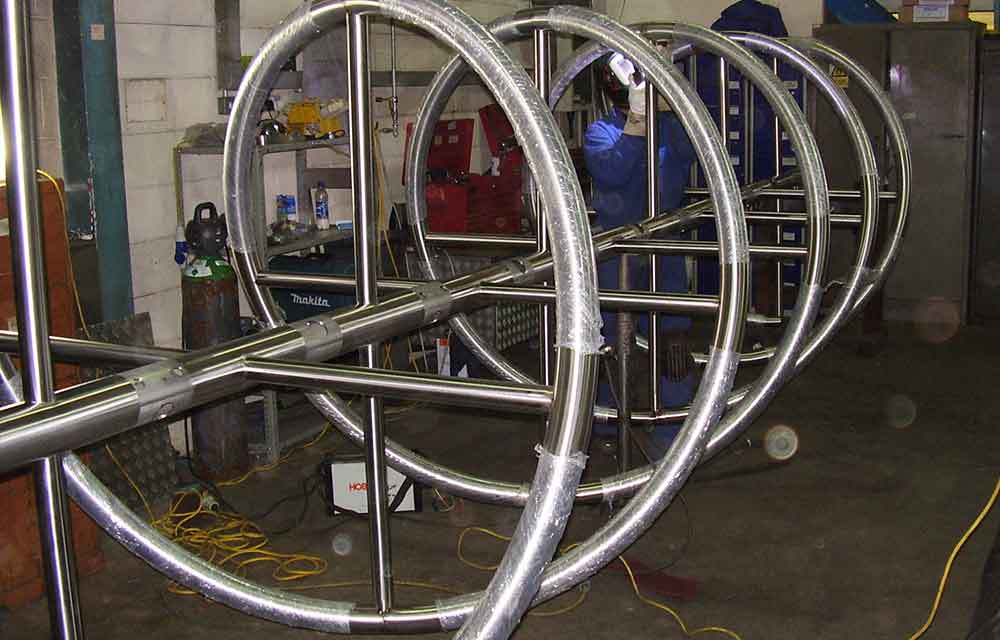In the world of architectural fabrication, the selection of the right type of metal is crucial. Not only does it determine the aesthetic appeal of a structure, but it also affects its durability and functionality. Different types of metals bring unique qualities and capabilities, and understanding these can greatly enhance the outcomes of industrial projects.
There is an array of metals commonly employed in the field of architectural fabrication. Each has its own set of properties that make it suited for certain applications. Whether you’re designing a skyscraper or a piece of bespoke furniture, understanding the types of metals used in architectural fabrication helps in making informed decisions.

1. Steel: The Foundation of Modern Architecture
Steel is perhaps the most widely used metal in architectural fabrication. Its immense strength, coupled with its versatility, makes it an ideal choice for structures that require both durability and aesthetic flexibility. Learn more about metal fabrication.
Types of Steel
Within the category of steel, there are several variations:
- Carbon Steel: Known for its strength and used in construction beam and panels.
- Stainless Steel: Valued for its corrosion resistance, often used in exterior cladding and roofing.
- Alloy Steel: Typically used where specialized properties are needed.
2. Aluminum: Lightweight and Flexible
Aluminum is a popular choice in architectural fabrication due to its lightweight nature and resistance to corrosion. Its flexibility allows for innovative designs and structures, making it a favorite in modern architecture.
Applications of Aluminum
The use of aluminum ranges from window frames to curtain walls. Its ability to be easily manipulated into various shapes and forms makes it indispensable in creative architectural designs.
3. Copper: Timeless Elegance and Durability
Copper stands out for its distinctive appearance and long-lasting nature. It is highly durable and develops a beautiful patina over time, adding character to any architectural project.
Uses of Copper
Commonly used in roofing and gutter systems, copper is not only functional but also adds a touch of elegance to buildings.
4. Brass and Bronze: The Artistic Metals
Both brass and bronze are known for their aesthetic appeal. They are predominantly used in decorative elements within buildings.
Characteristics of Brass and Bronze
Brass is often chosen for its gold-like appearance, while bronze is prized for its deep, rich tones. These metals are often used in fixtures, fittings, and artistic architectural details.
5. Titanium: Strength Meets Lightness
Titanium is well-regarded for its strength-to-weight ratio. This metal is corrosion-resistant and extremely durable, making it suitable for both structural and decorative purposes.
Where is Titanium Used?
Although costly, titanium is used in high-end architectural projects where both performance and appearance are paramount.
6. Zinc: For Sustainable Architecture
Zinc is gaining popularity due to its eco-friendly properties. It is completely recyclable and has a self-healing surface that makes it ideal for sustainable building practices.
Applications of Zinc in Buildings
Commonly used in roofing and facades, zinc provides a sleek, modern look while being environmentally responsible.
7. Lead: Traditional Yet Controversial
While lead has traditionally been used in construction, its use is now limited due to health concerns. However, it is still found in some restoration projects.
The Role of Lead
Lead is often used in historic building restoration and in applications where its unique properties are required.
8. Nickel: Enhancing Durability
Nickel is often used as an alloying metal to enhance the strength and durability of other metals. It is commonly found in stainless steel and other corrosion-resistant alloys.
Conclusion
In conclusion, the choice of metals in architectural fabrication is a critical decision that affects both the functionality and the aesthetic outcome of a project. From the sturdy steel frameworks to the elegant copper finishes, each metal offers unique advantages and challenges.
For those in the industrial manufacturing field, understanding these types of metals and their properties is essential to achieving the best possible results in any architectural endeavor. For more insights into the intricacies of metal fabrication, check out Architectural Metal Fabrication.

FAQs
What is the most commonly used metal in architectural fabrication?
Steel is the most commonly used metal due to its strength and versatility.
Why is aluminum favored in modern architecture?
Aluminum is favored for its lightweight nature and resistance to corrosion.
What makes copper a popular choice in architecture?
Copper is popular for its durability and the unique patina it develops over time, adding aesthetic value.
This article contains affiliate links. We may earn a commission at no extra cost to you.

